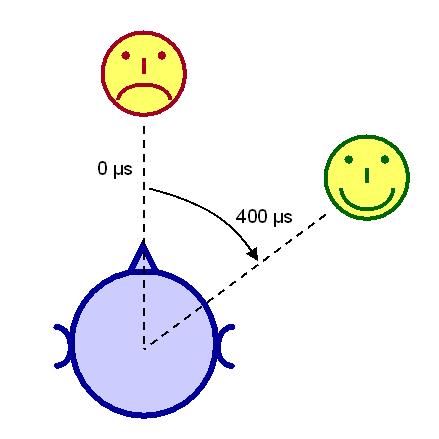 Deutsche Fassung
Deutsche Fassung
Phase-Difference-Cocktail-Party-Processor
A detailed description can be found in the Dissertation (translated from German):
the Realisation of a binaural Cocktail-Party-Processor-System",
Harald Slatky, Ruhr-University Bochum, 1992
| Desired female speaker at the right | (interaural time difference | 400 µs) |
| Interfering male speaker in front | (interaural time difference | 0 µs) |

The ear signals have been simulated for a "mean" human head. In order to determine a "mean" human head, the relationship between interaural time difference and interaural level difference has been measured at 3 persons and averaged over these 3 persons.
(see Appendix C in
Dissertation above)
The ear signals have been simulated under free field conditions without any wall reflections.
| Unprocessed signal: | original ear signals of both speakers, summed up |
| Processed signal: | output signal of the Cocktail-Party-Processor |
| Audio samples of the sound situation: | Signals of desired speaker, interfering speaker, unprocessed signal, processed signal |
|
Level of the interfering speaker |
Level of the desired speaker |
Level difference desired/interfering speaker |
Unprocessed signal |
Processed signal |
Audio samples of the sound situation |
|
50 dB |
50 dB |
0 dB |
|||
|
50 dB |
40 dB |
-10 dB |
|||
|
50 dB |
30 dB |
-20 dB |
|||
|
50 dB |
20 dB |
-30 dB |